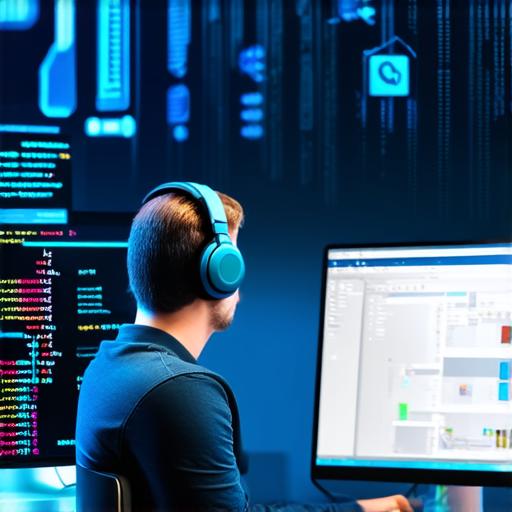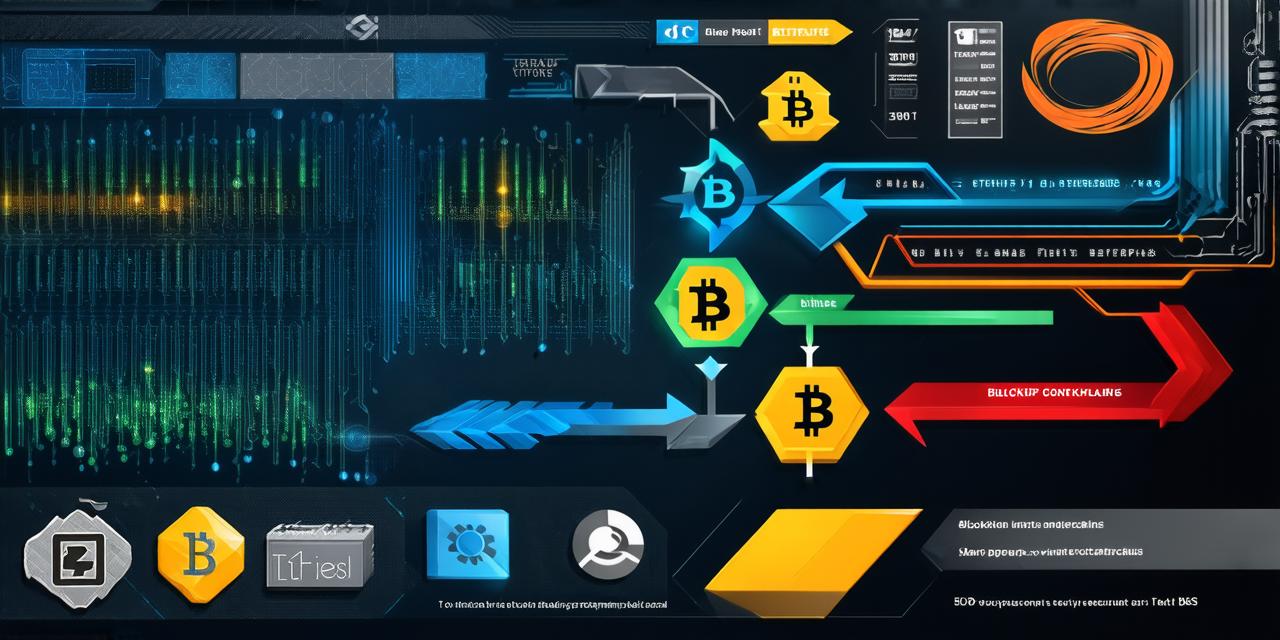Introduction
Blockchain technology is an innovative solution that offers decentralized, secure, and transparent storage and transfer of data. With the increasing adoption of blockchain technology in various industries, there has been a growing demand for developers with expertise in programming blockchains.
What is Blockchain Programming?
Blockchain programming involves creating dApps that run on top of existing blockchain platforms like Ethereum, Hyperledger, and EOS. These dApps can be used for various purposes such as cryptocurrency trading, supply chain management, and identity verification. To become a blockchain developer, you need to have knowledge of programming languages like Solidity, Java, Python, and Go.
The Basics of Blockchain Programming
Before we dive into the technical aspects of blockchain programming, let’s first understand the basics.
-
Structure: A blockchain is a chain of blocks that contains information about transactions. Each block contains a hash, which is a unique identifier for that block. The hash is generated using cryptographic algorithms and depends on the previous block’s hash.
-
Consensus Mechanism: A consensus mechanism is a process by which nodes on the network agree on the validity of new blocks. There are various consensus mechanisms used in blockchain, such as Proof-of-Work (PoW), Proof-of-Stake (PoS), and Delegated Proof-of-Stake (DPoS).
-
Smart Contracts: Smart contracts are self-executing programs that run on the blockchain. They can be used to automate various processes, such as payment processing and identity verification.

The Process of Programming a Blockchain
Now that we have covered the basics, let’s move on to the process of programming a blockchain.
-
Choose a Platform: The first step is to choose a blockchain platform on which you want to build your dApp. Each platform has its unique features and capabilities, so it’s essential to choose the one that fits your requirements.
-
Create a Wallet: Once you have chosen a platform, create a wallet to store your cryptocurrency. A wallet is a digital wallet that allows you to send, receive, and store cryptocurrencies.
-
Write Smart Contracts: Smart contracts are self-executing programs that run on the blockchain. They can be used to automate various processes such as payment processing and identity verification. To write smart contracts, you need to have knowledge of programming languages like Solidity, Java, Python, and Go.
-
Test Your dApp: Before deploying your dApp, it’s essential to test it thoroughly to ensure that it works as expected. You can use tools like Truffle and Remix for testing your smart contracts on the Ethereum network.
-
Deploy Your dApp: Once you have tested your dApp, you can deploy it on the blockchain platform. To deploy your dApp, you need to have knowledge of the platform’s deployment process.
Real-Life Examples of Blockchain Programming
1. Cryptocurrency Trading
One of the most popular use cases for blockchain programming is cryptocurrency trading. Platforms like Binance and Coinbase allow users to buy, sell, and trade various cryptocurrencies using smart contracts.
2. Supply Chain Management
Blockchain technology has revolutionized supply chain management by providing a transparent and secure system for tracking products from production to delivery. Companies like Walmart and Maersk have implemented blockchain solutions to improve supply chain efficiency and reduce fraud.
3. Identity Verification
Blockchain technology is being used to create decentralized identity verification systems that provide users with greater control over their personal data. Platforms like Civic and uPort allow users to create and manage digital identities that can be used for various purposes such as online payments and accessing government services.
FAQs
1. What is a blockchain?
A blockchain is a decentralized, secure, and transparent system for recording transactions on a distributed ledger.
2. What are smart contracts?
Smart contracts are self-executing programs that run on the blockchain and automate various processes such as payment processing and identity verification.
3. How do I create a wallet?
You can create a wallet by choosing a cryptocurrency exchange or wallet service provider. You will need to provide personal information and choose a password to secure your wallet.
4. What are the most popular blockchain platforms?
The most popular blockchain platforms are Ethereum, Hyperledger, and EOS.
5. Can I write my own smart contract?
Yes, you can write your own smart contracts using programming languages like Solidity, Java, Python, and Go. However, it requires knowledge of the blockchain platform’s programming language and development tools.
Conclusion
Blockchain programming is an exciting field that offers endless opportunities for developers to create innovative solutions for various industries. With the increasing adoption of blockchain technology, there will be a growing demand for skilled developers with expertise in programming blockchains. By following this guide, you can gain a better understanding of the basics of blockchain programming and how to create decentralized applications on top of existing blockchain platforms. Remember, with knowledge and practice, anyone can become a blockchain developer.
